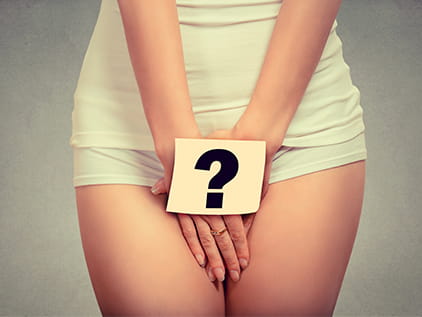- Home
- Conditions and Care
- Specialties
- Urogynecology and Reconstructive Pelvic Surgery
Reconstructive Pelvic Surgery and Urogynecology

The University of Kansas Health System in Kansas City, Kansas, offers care by urogynecology and reconstructive pelvic surgery specialists to address gynecologic issues and improve your quality of life. This specialty may also be called female pelvic medicine.
Your pelvic floor supports your uterus, vagina, bladder and rectum. When symptoms like painful intercourse, urinary incontinence or prolapse, cause discomfort, your gynecologist or urologist might refer you to our integrated urogynecology and reconstructive pelvic surgery program.
About urogynecology and reconstructive pelvic surgery
Our team combines board-certified gynecologists and urologists who have completed fellowship training in conditions related to urogynecology. This expertise means you get more precise and skilled care. Our goal is to return you quickly and comfortably to your active daily life without the hindrance of bladder or pelvic problems.
The urogynecology conditions we treat
Many of the natural processes in a woman's lifetime, including childbirth, menopause and aging, can cause changes that contribute to bladder or pelvic problems. Sometimes other diseases and medications can also create these problems. Common symptoms include painful pelvic cramps, sudden stabbing pain in your pelvis, urinary or fecal incontinence and pain when urinating. Some of the common conditions we treat are:
- Bladder pain
- Chronic pelvic pain
- Fecal incontinence
- Fistula repair
- Genitourinary syndrome of menopause
- Overactive bladder
- Painful bladder syndrome
- Pelvic floor dysfunction
- Pelvic organ prolapse, including uterine prolapse, cystocele, rectocele and enterocele
- Pelvic pain
- Pelvic reconstruction
- Recurrent urinary tract infections
- Sexual discomfort
- Urinary incontinence (stress and urgency)
- Urinary retention
- Vaginal and vulvar cosmesis
We offer a variety of appointment types. Learn more or call 913-588-1227 to schedule now.
Diagnosis and treatment of urogynecology issues
Urogynecology and reconstructive pelvic surgery specialists treat complex conditions. That’s why it’s important you see an interdisciplinary team with specialized training. We will use several approaches to help diagnose, treat and care for your unique issue.
Evaluations
There are many diagnostic tools that may be used to assess your condition. A comprehensive pelvic exam can be used for evaluation of pelvic organ prolapse. Office cystoscopy may be used to visually inspect the bladder and urethra. Urodynamics measures pressure changes in the bladder and urethra with 2 small catheters and is used to diagnose the causes of urinary incontinence or voiding dysfunction. Finally, diagnostic pelvic floor evaluations may be completed.
Nonsurgical therapies
There are many treatments that can be completed in the office to help treat your condition. They include:
- Bladder instillations
- Botox bladder injections
- Botox pelvic floor injections
- Mona Lisa CO2 vaginal laser therapy
- Overactive bladder medication management
- Pelvic health physical therapy
- Pessary fitting
- Posterior tibial nerve stimulation
- Trigger point injections

Don't call it vaginal rejuvenation
For those with gynecologic issues, vaginal lasers aren't about cosmetic concerns – they're about quality of life.
Get the low down on MonaLisa Touch Laser Therapy
Surgical intervention
In some situations, surgery is required. Where possible, we use minimally invasive surgery techniques using laparoscopic and robotic technology. The University of Kansas Health System is 1 of the first institutions in the state of Kansas to have surgeons trained to perform gynecological procedures using the state-of-the-art robotic da Vinci® Surgical System.
Surgical procedures include robotic sacrocolpopexy, native tissue prolapse repairs with vaginal suspension, colpocleisis, urethral bulking, placement of mid-urethral and fascial slings for stress incontinence and sacral nerve stimulator implants.
Innovation
As part of an academic medical center, we have access to clinical trials including those for urinary incontinence, overactive bladder and pelvic organ prolapse.

Leading research and clinical trials
As part of one of the nation's premier academic medical centers, our care providers are committed to research and scientific discovery through the University of Kansas Medical Center. We can often include our patients in potentially lifesaving clinical trials and treatment options not available anywhere else.
Our team
Patients have access to fellowship-trained physicians, disease-specific advanced practice providers and nurses recognized by the American Nurses Credentialing Center (ANCC) as Magnet-designated. Services are offered at the best hospital in Kansas as ranked by U.S. News & World Report.
Urogynecology and reconstructive pelvic surgery specialty care is available in-person at the Medical Pavilion in Kansas City, Kansas, Overland Park, Gladstone and via telehealth. Ask us about community-based affiliations expanding access to specialty care. We welcome referring provider consultations.

Find a doctor
Doctors at The University of Kansas Health System are care providers and researchers at the forefront of new medical discoveries. From primary care to complex conditions, we offer hundreds of specialists.




